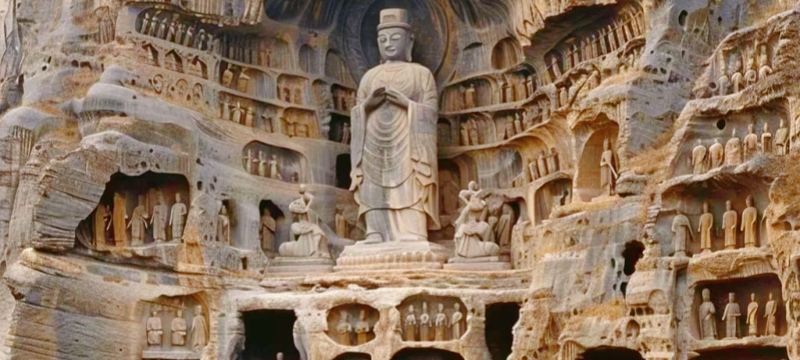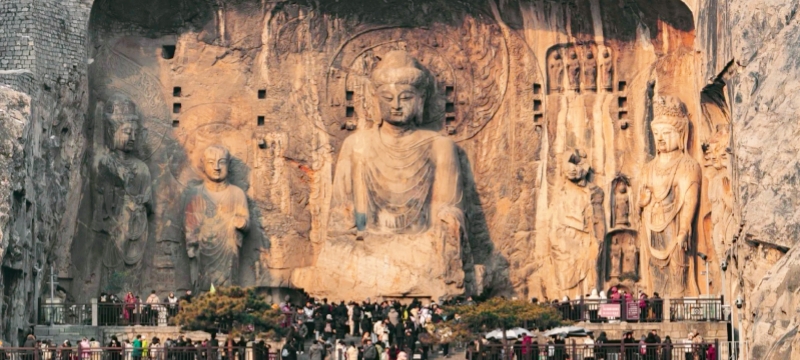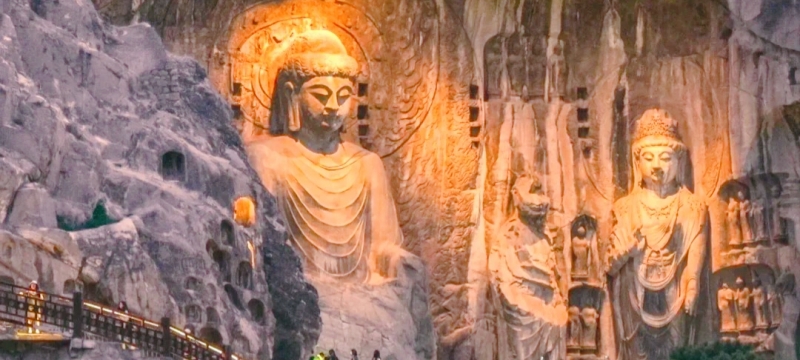





Longmen Grottoes
The Longmen Grottoes, a UNESCO World Heritage Site in Luoyang, Henan, are renowned Buddhist cave temples carved between the 5th and 9th centuries. Over 100,000 statues, including the iconic Vairocana Buddha, adorn the Yi River cliffs, blending Indian Buddhist influences with Chinese artistic flair. The site reflects medieval China’s religious devotion and cultural exchange. Visit in spring or autumn for optimal weather, and pair with nearby White Horse Temple for a deeper cultural experience.
1.Attraction Introduction
The Longmen Grottoes, a UNESCO World Heritage Site, are ancient Buddhist rock carvings nestled along the Yi River in Luoyang, Henan Province. Dating back to 493 AD during the Northern Wei Dynasty, the site features over 2,300 niches, 100,000 statues, and 2,800 inscribed tablets. Highlights include the Fengxian Temple (housing the 17.14m-tall Vairocana Buddha), Bingyang Cave (Tang Dynasty royal portraits), and Lotus Cave (exquisite Tang Dynasty carvings). The grottoes blend religious artistry with natural beauty, offering serene river views and autumn maple reflections.
2.Historical Background
Constructed over 400 years by royal patronage and Buddhist monks, the Longmen Grottoes reflect China’s cultural fusion. Initially influenced by Central Asian styles, later carvings showcase Tang Dynasty grandeur (7th–10th century), emphasizing realism and imperial grandeur. The site declined after the Song Dynasty but was rediscovered in the 20th century. Restoration continues today, preserving this "Temple of Stone Art."
3.Map & Key Spots
West Hill: Fengxian Temple (main attraction), Guyang Cave (calligraphy), and Medicine King Temple (Tang Dynasty).
East Hill: Xiangyang Cave (music-themed carvings), Lianhua Cave (Tang Dynasty elegance).
Riverside Path: Statues of disciples and donors, plus Yi River views.
Baiyuan Temple: Nearby Tang Dynasty pagoda (separate admission).
4.Suggested Route
3-Hour Essentials:
Start at Fengxian Temple → Walk west to Guyang Cave → Cross Yi River to Xiangyang Cave → End at Lianhua Cave.
Full-Day Exploration: Add Baiyuan Temple and Dongshan Grottoes (less crowded, featuring Northern Wei art).
5.Best Time to Visit
Season: Spring (April–May) for wildflowers; Autumn (October) for maple foliage.
Time: Weekdays 8–10 AM (avoid tour groups). Evening visits (summer) offer lantern-lit views.
Avoid: National holidays (Golden Week, Lunar New Year).
6.Transportation Guide
From Luoyang:
Bus: K81 (1.5 hours, 1.5¥) from Luoyang Station.
Taxi: ~50¥ from downtown (40 mins).
Self-Drive: Parking available (20¥/day).
Xi’an/Zhengzhou: High-speed train to Luoyang Longmen Station (20 mins taxi).
7.Costs & Tickets
Admission: 90¥ (full), 45¥ (students).
Combo Tickets: Add Baiyuan Temple (+30¥) or Xiangshan Temple (+50¥).
Guides: Official guide 200¥/group (negotiable). Audio guides available (30¥).
8.Special Notes
Photography: Use flash sparingly (may damage pigments).
Footwear: Wear comfortable shoes (uneven stone paths).
Etiquette: No touching statues; respect meditation areas.
Night Visits: Limited areas lit; check seasonal schedules.
